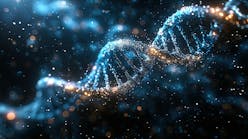We don’t know what will be remembered as the most important healthcare stories of 2015, but almost certainly one of them will be the heightened awareness of the threat posed by methicillin-resistant staphylococcus aureas (MRSA) and other antibiotic-resistant bacteria, and the ramped-up efforts to reverse the alarming increase in those potential threats to public health. Both within the medical community and among the general public, concerns have grown about bacterial infections that have long been treatable—but may have evolved to be able to withstand established drug therapies. Public health experts have come together to devise strategies and best practices to slow the development of antibiotic-resistant organisms by reducing over-prescription, and to develop new therapies as well.
The battle against antibiotic-resistant bacteria gained momentum last June, when the Obama Administration hosted the White House Forum on Antibiotic Stewardship. Scientists, clinicians, leaders of the diagnostic and pharmaceutical industries, and healthcare policymakers met to raise awareness and agree on broad strategies. Those consensus strategies include avoiding the unnecessary prescription of antibiotics; obtaining data to gauge the spread of antibiotic resistance in areas of interest; employing diagnostic assays to determine the best use of the narrowest-spectrum antibiotics and to ascertain when not to use them at all; avoiding the use of antibiotics in food sources; and creating new therapies—including non-antibiotic options. (Mark Miller, MD, FRCPC, chief medical officer for bioMerieux, penned an informative article for MLO about the White House Forum; see page 28 of the November 2015 issue, or visit https://www.mlo-online.com/the-white-house-forum-on-antibiotic-stewardship-impacts-labs-across-the-u.s.)
Momentum and a shared sense of purpose among all stakeholders grew during Get Smart About Antibiotics Week, November 16 through November 22, which was sponsored by The Joint Commission and the Centers for Disease Control and Prevention (CDC). The observance recognized the CDC’s Get Smart: Know When Antibiotics Work program, and its goal was to raise public awareness about the threat of antimicrobial resistance and the importance of prescribing and using antibiotics appropriately. Get Smart Week focused on appropriate antibiotic use in outpatient, hospital, and long-term care settings. Activities included a Twitter chat and new fact sheets on the topics. The Joint Commission also has a Speak Up campaign to help with educating patients about antibiotics, focusing on the do’s and don’ts of antibiotics—including a table that lists the illnesses that may require an antibiotic.
In the meantime, news came across the healthcare wires on this topic with regularity, including scientific advances, policy proposals, and public awareness issues. Here are a few of the items that have collected in my in-box.
Public misunderstanding
As the World Health Organization (WHO) ramps up its fight against antibiotic resistance, a new multi-country survey shows that people are confused about this major threat to public health and do not understand how to prevent it from growing.
Antibiotic resistance happens when bacteria change and become resistant to the antibiotics used to treat the infections they cause. Overuse and misuse of antibiotics increase the development of resistant bacteria, and this survey points out some of the practices, gaps in understanding, and misconceptions which contribute to this phenomenon.
“The findings of this survey point to the urgent need to improve understanding around antibiotic resistance,” says Dr. Keiji Fukuda, Special Representative of the WHO Director-General for Antimicrobial Resistance. “One of the biggest health challenges of the 21st century will require global behavior change by individuals and societies.”
The multi-country survey included 14 questions on the knowledge and use of antibiotics and on antibiotic resistance, and it used a mix of online and face-to-face interviews. It was conducted in 12 countries: Barbados, China, Egypt, India, Indonesia,
Mexico, Nigeria, the Russian Federation, Serbia, South Africa, Sudan, and Vietnam. While not claiming to be exhaustive, this and other surveys will help the WHO and its partners to determine and address key gaps in public understanding of the problem and misconceptions about how to use antibiotics.
Some common misconceptions revealed by the survey include:
- Three-quarters (76 percent) of respondents think that antibiotic resistance happens when the body becomes resistant to antibiotics. In fact, bacteria—not humans or animals—become resistant to antibiotics and their spread causes hard-to-treat infections.
- Two-thirds (66 percent) of respondents believe that individuals are not at risk of a drug-resistant infection if they personally take their antibiotics as prescribed. More than four in ten (44 percent) of people surveyed think antibiotic resistance is only a problem for people who take antibiotics regularly. In fact, anyone, of any age, in any country can get an antibiotic-resistant infection.
- More than half (57 percent) of respondents feel there is not much they can do to stop antibiotic resistance, while nearly two-thirds (64 percent) believe medical experts will solve the problem before it becomes too serious.
Questions about MRSA therapy
A new study sheds light on how treatment of MRSA with certain antibiotics can potentially make patients sicker. The findings by Cedars-Sinai scientists could have implications for managing the virulent form of the common staph infection.
MRSA causes more than 80,000 invasive infections and 11,000 related deaths per year, according to 2011 figures from the CDC. Although many studies have established that MRSA infections cause more severe diseases compared with normal staph infections, what makes MRSA so pathogenic is not entirely clear. The Cedars-Sinai researchers suggest that one answer lies in part of the very name of the superbug—methicillin-resistant. In laboratory mice, treatment with antibiotics similar to methicillin, called beta lactams, caused the MRSA bacteria to build cell walls that are highlyinflammatory and damaging to tissues.
The Cedars-Sinai scientists explain that beta-lactam antibiotics kill normal staph bacteria by inactivating their cell-wall-making enzymes. But one of these enzymes, PBP2A, which is induced when MRSA is exposed to beta-lactam antibiotics, is not rendered inactive by the antibiotics. In fact, PBP2A allows the superbug to continue making its cell wall. Further, the cell wall’s structure differs from that of normal staph.
“This altered cell wall induces a powerful inflammatory response,” says study co-senior author, David Underhill, PhD. “In mice infected with MRSA, induction of PBP2A with methicillin led to more inflammation and pathology.”
The authors say their study findings in mice raise the possibility that prescribing beta-lactam antibiotics to treat infections in humans may worsen the infection, should the source prove to be MRSA. The potential dilemma for physicians is that beta-lactam antibiotics’ overall effectiveness often makes them the first line of defense when the origin of a severe infection is unknown. In addition, the time it takes to culture MRSA can make early diagnosis difficult.
Using diagnostic tests to stop antibiotic overuse
Doctors should use diagnostic tests for infection more often to prevent overprescribing of antibiotics that are responsible for the rise of drug-resistant bacteria, says the British government’s so-called superbug tsar.
Lord Jim O’Neill, who chairs the Review on Antimicrobial Resistance, says it often seems cheaper and easier to give patients antibiotics rather than using tests to find out if they really need them. He also calls for more investment to make tests faster and more accurate.
Unnecessary over-prescribing of antibiotics has helped drive the rise of drug-resistant bacteria, and Lord O’Neill’s latest report asserts that the medical profession has been slow to embrace the use of diagnostic testing before antibiotics are prescribed. Most prescriptions are still based on so-called “empirical” diagnosis: physicians use their expertise, intuition, and professional judgement to guess whether an infection is present and what is likely to be causing it.
“For far too long we haven’t recognized the huge cost to society of increasing resistance when we use antibiotics that we don’t need—such as antibiotics for flu which have no effect except to increase the chances of superbugs developing,” says Lord O’Neill. “To avoid the tragedy of 10 million people dying every year by 2050, the world needs rapid diagnostics to improve our use of antibiotics.”
Lord O’Neill is expected to deliver a comprehensive plan of action in the late spring of 2016. His interim report calls for:
- Subsidizing the cost of diagnostic tests to make their use more competitive than issuing on-demand prescriptions of antibiotics
- Providing funding for developing new diagnostic tests
- Building a long-term economic case for rapid diagnostics.
His “wish-list” also includes a rapid diagnostic test that could be used by patients at home to indicate if they had a bacterial infection that might be treatable with antibiotics or a viral infection that would not.
Drug-resistant E. coli in community hospitals
Drug-resistant E. coli infections are on the rise in community hospitals, where more than half of United States patients receive their healthcare, according to a new study from researchers at Duke Medicine.
The study reviewed patient records at 26 hospitals in the Southeast. By examining demographic information, admission dates, and tests, the researchers also found increased antibiotic-resistant infections among community members who had limited exposure to healthcare settings, but who may have acquired the bugs through some other environmental factors.
The study data were gathered through the Duke Infection Control Network
(DICON), which helps community hospitals and surgery centers across the U.S. prevent infections, using education and evidence-based strategies. The data showed that between 2009 and 2014, the incidence of drug-resistant extended-spectrum beta-lactamase (ESBL)-producing E. coli doubled from a rate of 5.28 incidents per 100,000 patients to a rate of 10.5 infections per 100,000. The median age of patients infected with E. coli was 72 years.
“Overall, the majority of E. coli infections occurred after healthcare exposure, which makes all hospitals, big and small, important areas of focus to reduce transmission,” says lead author Joshua Thaden, MD. “It’s important to consider that a patient’s skin may be colonized with drug-resistant bacteria, but because the patient does not display symptoms, providers may not test him or her or use extensive contact precautions during care. I think we may be close to a point where it becomes worth the cost and effort to actively screen patients for resistant E. coli.”
Looking at the timing of patients’ infections and when they were last in contact with a healthcare setting, the researchers also discovered that people with infrequent healthcare contact were acquiring the superbug at an even faster rate than patients who have regular contact with hospitals or nursing homes. The data showed a greater than three-fold increase in community-associated infections between 2009 and 2014.
Three-drug combination effective
Three antibiotics that, individually, are not effective against MRSA can kill the deadly pathogen when combined as a trio, according to new research. The researchers, at Washington University School of Medicine in St. Louis, have killed MRSA in test tubes and laboratory mice, and believe the same three-drug strategy may work in people.
The trio of antibiotics are meropenem, piperacillin, and tazobactam. They are beta-lactams (as in the Cedars-Sinai study described on page 26), and they have not been effective against MRSA for decades.
Working with collaborators at Barnes-Jewish Hospital, investigator Gautam Dantas, PhD, and his team tested and genetically analyzed 73 different variants of the MRSA microbe to represent a range of hospital-acquired and community-acquired forms of the pathogen. The researchers treated the various MRSA bugs with the three-drug combination and found that the treatments worked in every case.
Then, in experiments conducted by collaborators at the University of Notre Dame, the team found that the drug combination cured MRSA-infected mice and was as effective against the pathogen as one of the strongest antibiotics on the market.
Dantas explained that the drugs, which attack the cell wall of bacteria, work in a synergistic manner, meaning they are more effective combined than each alone.
The researchers also found that the drugs didn’t produce resistance in MRSA bacteria—an important finding, since more and more bacteria are developing resistance to available drugs.
“This three-drug combination appears to prevent MRSA from becoming resistant to it,” Dantas says. “We know all bacteria eventually develop resistance to antibiotics, but this trio buys us some time—potentially a significant amount of time.”





